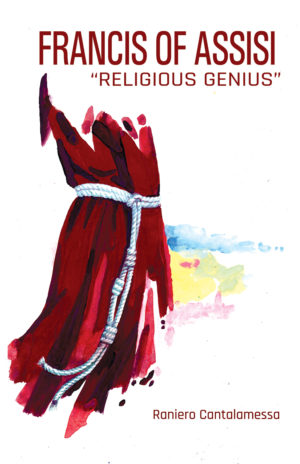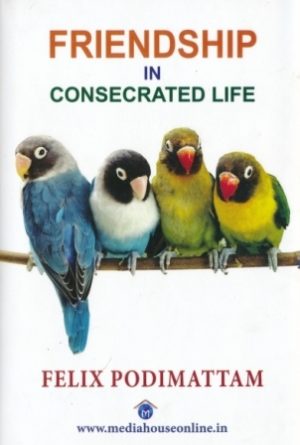Description
Let us know the Author Dr. Felix Podimattam OFM Cap.
Dr. Felix Podimattam is one of the best known Indian authors in the field of ethics and morality. He holds a Master’s degree in Political Science from the University of Mysore, a Licentiate degree in theology from Pontifical Gregorian University, Rome and a Doctoral degree in Moral Theology from the Alphonsian Academy, Rome. His doctoral thesis ‘The Relativity of Natural Law’ is acclaimed as exceptionally excellent. The thesis was guided by the eminent Moral Theologian, Bernard Haering, who influenced the renewal of Moral teachings of the Church during and after the Vatican II. Dr. Podimattam is resident professor at St. Francis Theological College, Kottayam and has been the founding member and first president of the Indian Moral Theologians Association. Most of his books, numbering over 120, are published by Media House, Delhi. Having gone through most of his books, let me highlight the most significant characteristics of his writings. First of all, he engages in a creative dialogue with other authors on every topic of discussion. Second, he tries to compare and integrate, as far as possible, the visions and views of other religions. Third, he holds a very positive attitude to life in general, especially to human body, sexuality, etc. Fourth, he is a keen observer of the socio-political and religious happenings in the society and responds to them immediately. His book on ‘Fast unto death’ during the upheaval of fisher people’s struggle in the eighties and his book on ‘Da Vinci Code’ a few years ago, where he gives a theological response to journalism with half-truths, are worth mentioning here. Fifth, he has taken keen interest on equal rights and dignity to women in the Church as well as in the society. In the context of widespread discrimination against women in the Church and society he published a six-volume work titled: ‘In praise of the woman’. Sixth, he holds on to the sacredness of life in all its forms and he has published books on topics like abortion, euthanasia, etc. Seventh, we find in his writings a harmonious blending of the traditional wisdom with its emphasis on fundamental Christian values as well as the findings of modern sciences like psychology, sociology, anthropology, etc, as well as the latest fruits of biblical exegesis.
The Making of a Masterpiece
The latest contribution of Dr. Podimattam, which may be acclaimed as his masterpiece, is: The Ten Commandments in the Law of Christ, a 20 volume work on the Decalogue. His vast knowledge on the subject gained through painstaking research, his teaching experience in various theological institutes stretching out over four decades and frank discussions with eminent thinkers have gone into this work. These books provide us with a re-interpretation of the commandments keeping in mind the genuine concerns of the people of God and at the same time remaining absolutely loyal to the teaching of Christ – “Christ did not come to abolish the law and the prophets, but to fulfil them”.
CONTENTS
INTRODUCTION
1.THEOLOGICAL REFLECTIONS ON THE MEDIA
1.1. Human Communication as the Reflection of Inter-Trinitarian Communication
1.2. The Impact of Information Technology on Theological Education.
1.3. Scientific Advancements Have Made Life less Human.
1.4. The Nature of Informational Technology
1.5. The Power of the Media
1.6. Importance of a f ree Media
1.6.1. Importance of Free Media for Development
1.6.2. The Right to Information Supposes the
Right to Free Expression
1.6.5. Freedom of Expression is Advocated by Scholars
2.2. Strengths of the Media
2.2.1. Appreciation of the Official Magisterium
c for the Media
c 2.2.2. The Media Turn the Whole World into a Community 41 { 2.2.3. The Media Promote Creation of Global Concern
2.2.4. The Media Promote Creativity
2.2.5. The Media Promote Education
2.2.6. The Media Champion Cause of Truth and Justice
2.2.7. The Media Promote Communication
2.2.8. The Media Promote Dignified Human Living
2.2.9. The Media Challenge to Risk
2.2.10. The Media Promote Scientific Temper
2.2.11. The Media Promote Pluralism
2.3. General Ethical Norms of the Media
3.1. General Ethical Norms Founded on the Universal Values
in Different Cultures
2.3.2. Embodiments of General Ethical Norms: Various Media Association Codes of Ethics
2.3.3. Code of Ethics of the Society of
Professional Journalists (SPJ)
Preamble
Seek Truth and Report It
2.4. Particular Ethical Principles Pertaining to the Media
2.4.1. Ethical Principle of Sacredness of Life
2.4.2. Ethical Principle of Persons in Solidarity
2.4.3. Ethical Principle of Human Dignity
2.4.4. Ethical Principle of Truth and Justice
2.4.5. Ethical Principle of Privacy
2.4.6. Ethical Principle of Responsibility
2.5. Moral Reservations in regard to the
Contemporary Media
2.5.1. Values at Stake in the Media
2.5.2. Issues that Need to be Confronted
2.5.2.1. Issue of the Very Role of Contemporary
Media in India
2.5.2.2. Contemporary Media Commonly
1.6.6. The Political Role of Free Expression in a
Democratic Society
1.6.7. Limitation to Freedom of Expression
Clear and Present Danger
Defamation\Slander\Libel
National Emergencies
Contempt ot Court
2. GENERAL ETHICAL REFLECTIONS ‘
ON THE MEDIA
2.1. Media are not Value-Free
Treat Women as Objects
2.5.2.3. Contemporary Media Projects a
False Image of Masculinity
2.5.2.4. Contemporary Media Ignores Religious Values
2.5.2.5. Cotemporary Media Corrode the Human Spirit
2.5.2.6. Contemporary Media Focus on
Aspiration rather than Inspiration.
2.5.2.7. Contemporary Media Encourages Voyeurism of War
2.5.2.8. Contemporary Media are not Truly Free
2.5.2.9. Contemporary Media Swarm us with
Myths and Illusions
2.5.2.10. Science and Medicine are Not Always
Well Served by the Contemporary Media.
2.6. Non-applicability of Conventional Media Norms
3.ETHICAL REFLECTIONS ON THE MAIN MEANS OF MEDIA
3.1. The Press
3.1.1. Meaning of the Printed Word
3.1.2. The Catholic Press in the Pluralistic Society
3.1.3. Respect, Privacy and the Press
3.1.4. Moral Issues Connected with Reading
3.2. The Telephone
3.3. The Camera and Similar Technologies
3.4. The Film
3.4.1. The Importance and Function of Cinema
3.4.2. Cinemas Ideal Function
3.4.3. Diversity of Function of Cinema
3.4.4. The Function of Service for the Good, the True,
the Beautiful.
3.4.5. Film Censorship.
3.4.5.1. Advantages of film censorship
3.4.5.2. Perils of film censorship
3.4.6. Facts about Indian Cinema
3.4.7. Facts about Indian Film Stars
3.5. Radio and Television
3.5.1. Roles of Radio and Television
3.5.1.1. In the service of the family
3.5.1.2. In the service of information
3.5.1.3. In the Service of culture and popular education
3.5.1.4. In the service of entertainment
3.5.1.5. In the service of religion
3.5.1.6. In the service of all men
3.5.2. Perils of Radio and Television
3.5.2.1. Radio and television as grave threat to the
virtue of silence
3.5.2.2. Television as the Great World Escape
3.6.2. The Perils of Computer Technology
3.6.3. Ethical Reflections on Computer Technology
3.6.3.1. Need for ethical discussion on computer science
3.6.3.2. Some ethical concerns regarding
computer technology
3.6.3.3. Codes of ethics for computer professionals
3.7. The Internet
3.7.1. Facts about Internet
3.7.2. Advantages of the Internet
3.7.3. Perils of the Internet
3.7.3.1. Peril of pornography
3.7.3.2. Ethical dilemma of lurking
3.7.3.3. Encountering hateful or libelous speech
3.7.3.4. Linking to offensive content
3.7.3.5. Hyperlinks can create ethical dilemma
3.7.3.6. Quality reporting
3.7.3.7. Online advertising dilemma
3.7.3.8. Remedies against the Perils
3.7.4. Ethical Issues in Cyberspace
3.7.5. The Practice of Cyber Ethics
3.7.6. Compassion as the Ideal Basis for Cyber Ethics.
3.8. The E-mail
3.9. The Mobile
4.MORAL ASPECTS OF ALLIED MEDIA ISSUES
4.1. Ethics of Plagiarism
4.1.1. Intellectual Property Rights (IPRs)
4.1.1.1. History of IPRs
4.1.1.2. Why are IPRs important?
4.1.1.3. Criticism of IPRs.
4.1.2. Definition of Plagiarism
4.1.3. Plagiarism in Academia
4.1.5. What Can One Copy?
4.1.5.1. Print media
4.1.5.2. Sound recordings
4.1.6. The Indian Copy Right Act 1957
4.2. Ethics of Advertising
4.2.1. Brief History of Advertising
4.2.2. Ethical Concerns regarding Advertising.
4.2.2.1. Advertising and the promotion of violence
4.2.2.2. Female stereotypes
4.2.2.3. Misrepresentation of human sexuality
4.2.2.4. Children and advertising
4.2.2.5. Truth and Deception in Advertising
4.2.2.6. Misplaced Priorities
4.3. The Ethics of Journalism
4.3.1. Who is a Journalist Today?
4.3.2. The Journalist’s Responsibility to Society
4.3.3. The Ethics of Reporting Disastrous Situations
4.3.4. The Ethics of Reporting Sexual News –
Avoid Over-Dramatization.
4.3.5. The Ethics of Photojournalism
4.3.6. Ethics of Investigative Journalism with
Particular Reference to “Sting” Journalism
4.3.6.1. Nature of Investigative Journalism
4.3.6.2. Nature of Sting Journalism.
4.6.4. The Ethics of Sting Journalism
4.3.6.4. Every Private Citizen has Right to Privacy
4.3.6.4. A Person in Public Life qua Public
Person Forfeits his Right to Privacy
4.3.6.4. Exploration of the Ethics of Sting Journalism
4.4. The Ethics of Media in Private Ownership1
4.4.1. Development of the Media Market
4.4.2. Freedom of Media – Civil Liberties and
War on Terrorism.
4.4.3. The Control of Media
4.4.4. The Ways the State Uses to Control Media
4.5. Ethics of State Control of the Media during
War, Emergency Situations
4.5.1. General Reflections.
4.5.6. Ayodhya Verdict: NBA Issues Guidelines to Broadcasters.
5. OTHER ISSUES CONNECTED WITH THE MEDIA284
5.1. Sociological Aspects of the Media.
5.1.1. Cinema is Not an Industry
5.1.2. Deficiencies of Catholic Media
5.1.3. Instances of Violation of Media Ethics
5.2. Legal Aspects of the Media
5.2.1. Right to Privacy
5.2.1.1. Notion of Privacy
5.2.1.2. Types of Privacy
5.2.1.2.1. Physical Privacy
5.2.1.2.2. Informational Privacy
5.2.1.2.3. Organizational Privacy
5.2.1.3. Philosophy of privacy
5.2.1.4. Probe and privacy
5.2.2. Defamation
5.2.3. Contempt of Court
5.3. Spiritual Reflections on the Media
5.3.1. An Attempt to Describe Elements of Cyberspirituality (Computer Spirituality)
5.3.1.1. Sacred Space
5.3.1.2. Cyberspace.
5.3.1.3. A cyberspirituality?
5.3.1.4. Sacred time and computer time
5.3.1.4.1. Sacred Time





Reviews
There are no reviews yet.